ON WORLD TRAVEL
TOP 15 THINGS TO DO IN BUDAPEST
TOP 15 THINGS TO DO IN BUDAPEST
After spending a few weeks here, here are our top 15 things we recommend seeing:
1. Buda Hill and Buda Castle
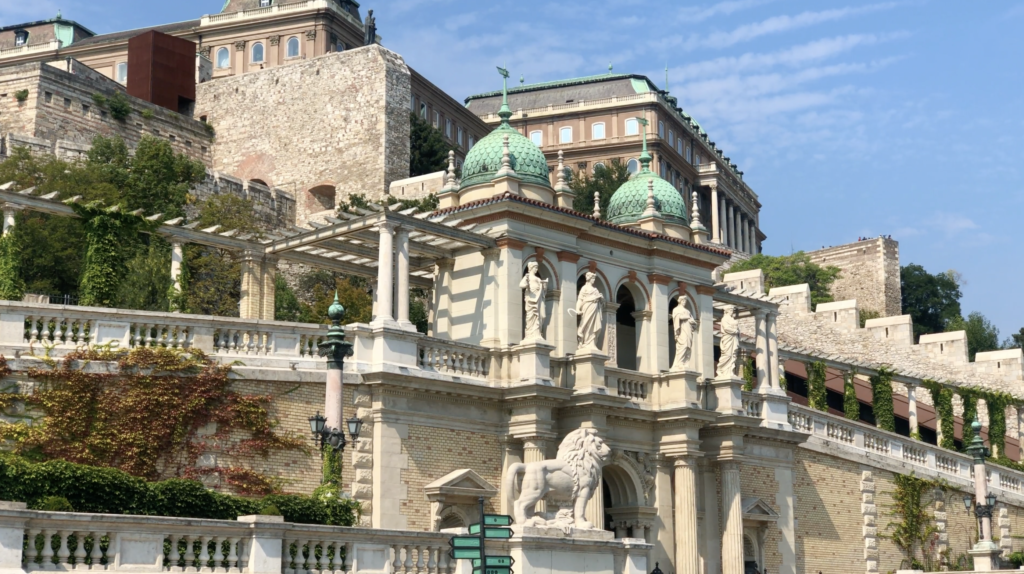
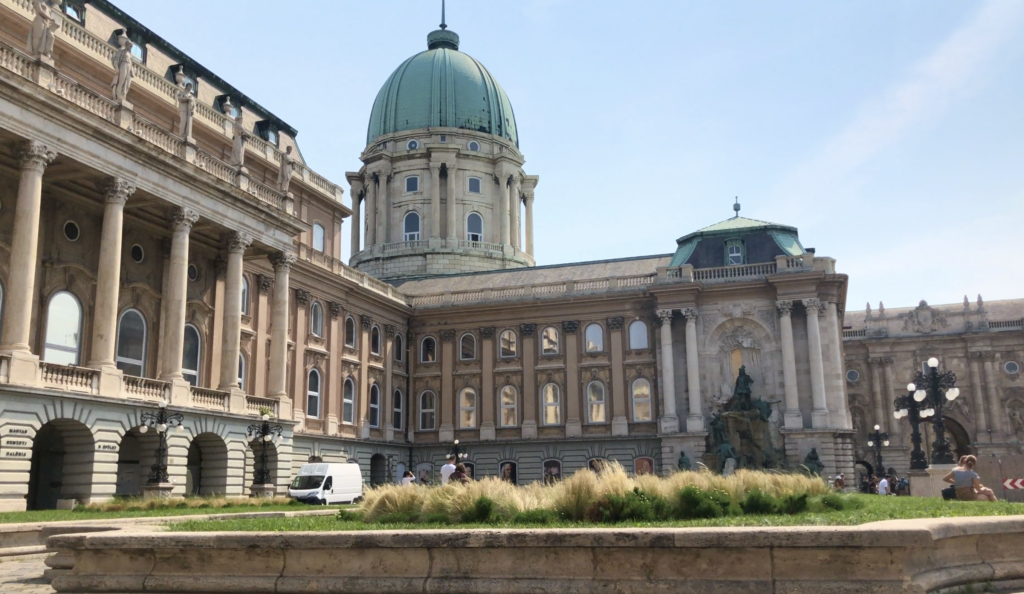
The first thing we did was cross the Chain Bridge over to see the Hills of Buda. From there, to get up to Buda Castle you can either walk it in the summer heat or take the Funicular. Cable cars depart every 10 minutes.
At the top, everyone is trying to capture the beautiful skyline, so it’s best to get there earlier in the day when there are less people, or just have some patience. This massive Baroque palace is a must see and around 12 you can also watch the “Changing of the Guard.”
2. Matthias Church and Fisherman's Bastion
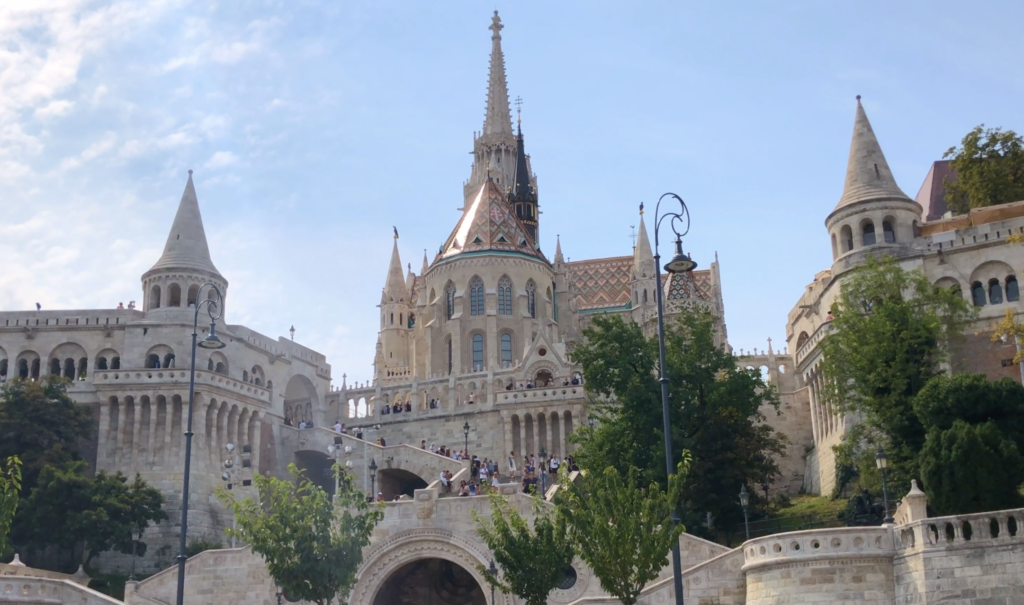
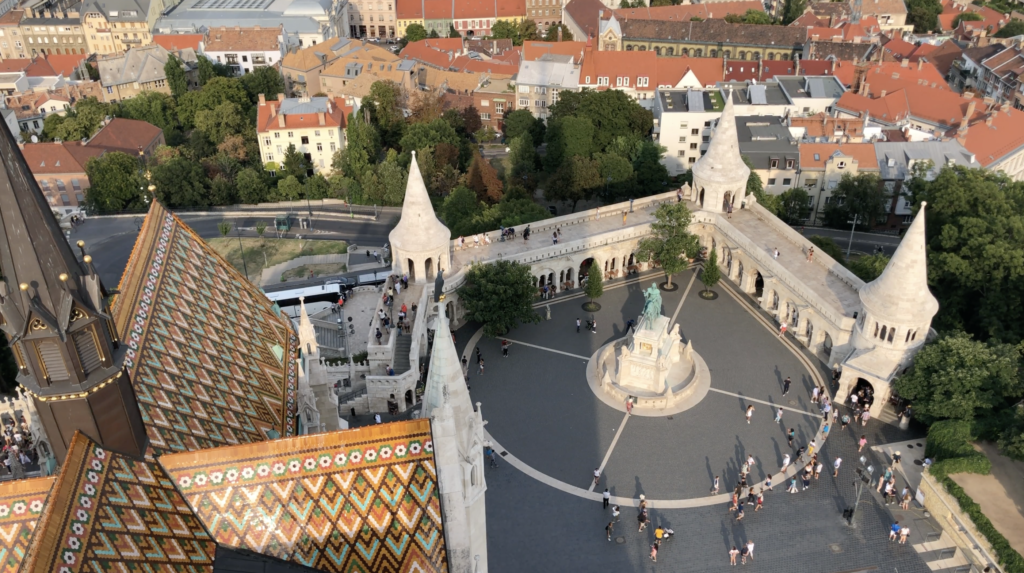
Just a short walk from Buda Castle leads you to the Matthias Church and Fisherman’s Bastion. The two blend together so well as the Bastion was built around the Matthias roman-catholic church, and from a distance almost gives it the impression to be united as one. They were in fact built by the same architect. The Fisherman’s Bastion has seven tourets which represent the seven hungarian tribes who founded Hungary in 1895.
You can find some of the best views of the city here. And for a small fee, I also recommend climbing the Matthias’ Church tower, it’s only a measly 200 steps up, but will get you the ultimate birds eye view of the city.
3. Gellert Hill: Citadella, Liberty Statue, and Gellert Spa
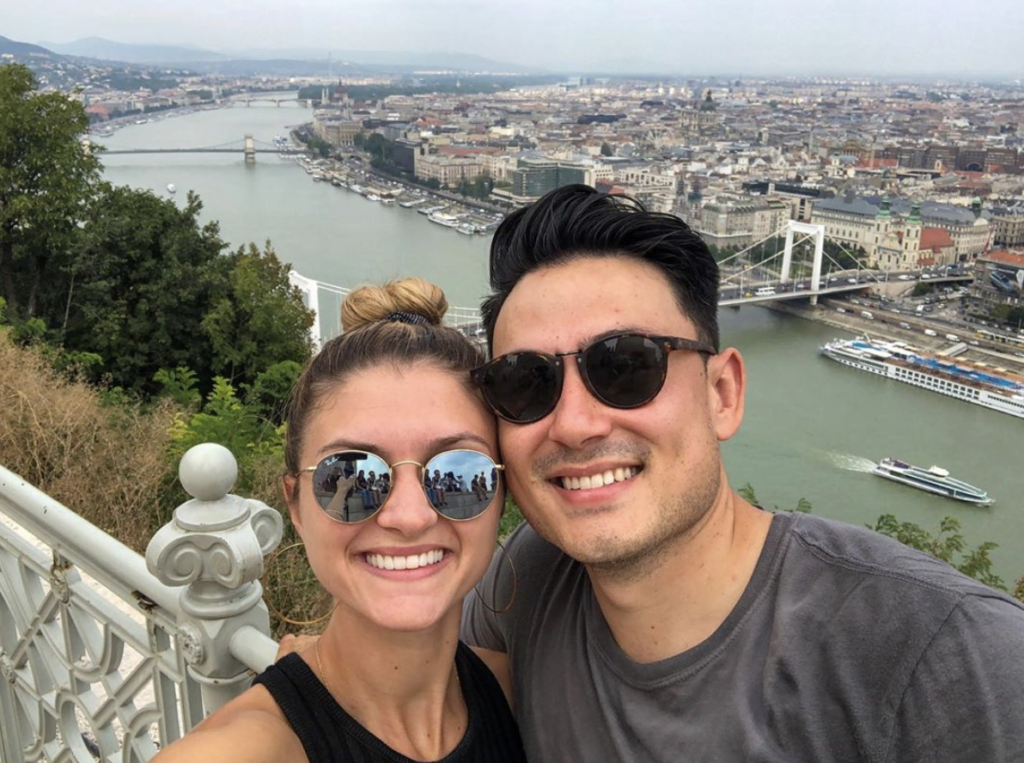
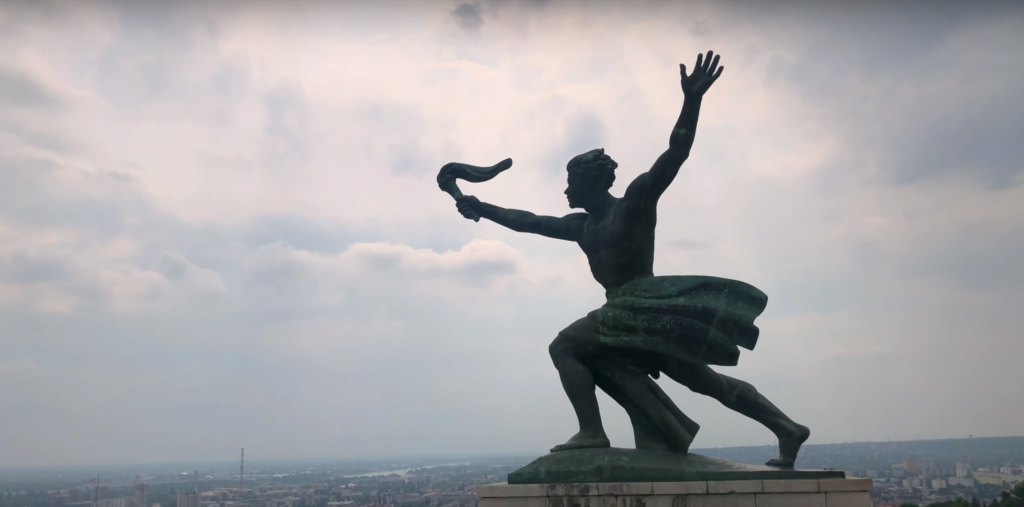
Head to the top of Gellert Hill, where you can find the beautiful Citadella and Liberty Statue. Although we didn’t have time to do this, we were always suggested to visit the Gellert Spa and Rudas Baths.
4. Hungarian Parliament Building
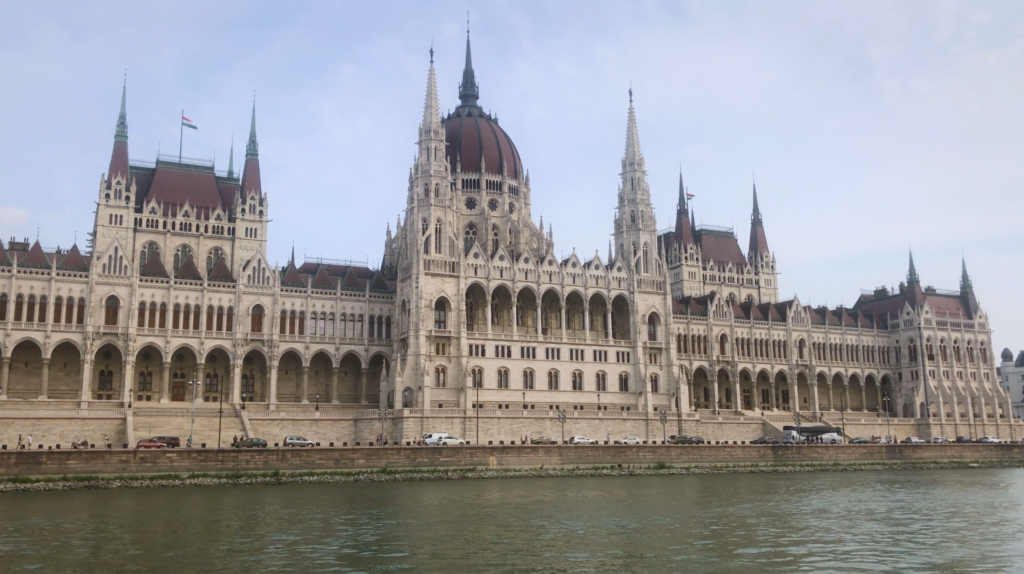
The Hungarian Parliament is the largest building in Hungary and immediately blew us away. And if it reminds you a bit of the British Parliament you wouldn’t be completely off the mark, because the winning Hungarian architect found much of his inspiration there. It took 17 years to build, 100,000 workers, half a million precious stones, and almost 100lbs of gold. The detail is undeniable and unlike many of Budapest’s landmarks that have been destroyed and rebuilt numerous times, the Parliament has been kept in pristine condition. Sadly, Imre Steindl, the architect, went blind in 1904 and never saw the building completed.
They offer guided tours of the inside and I also recommend watching the guards take down the flag at sun-down, one of the best times to see the Parliament is in the evening when the sun is setting.
5. Shoes on the Danube
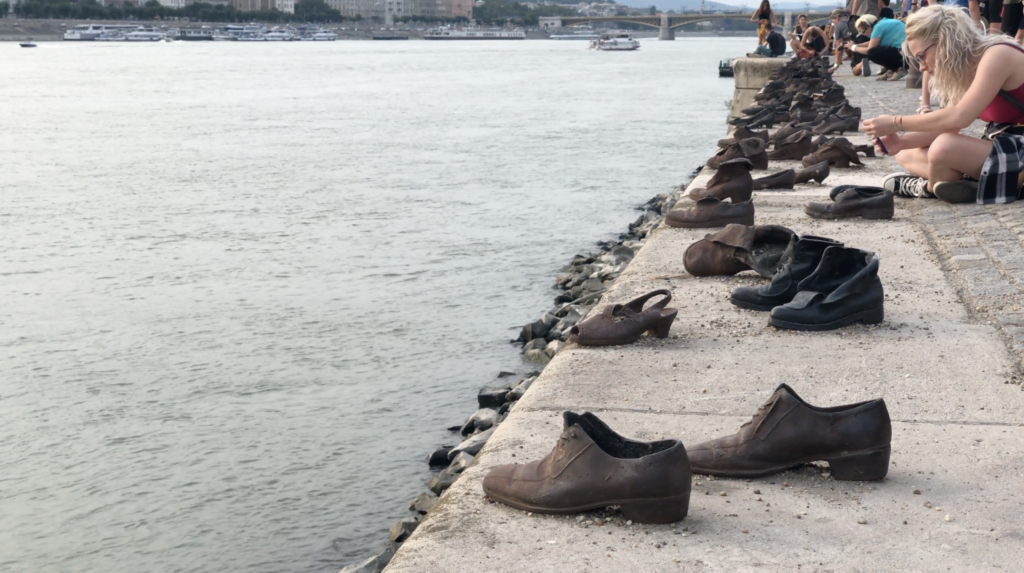
Nearby, you can also find the Shoes on the Danube, a unique and moving memorial sculpture by the river remembering those killed at the river by the fascist party during WWII.
If you walk a bit further away from the river, you can find the:
6. St. Stephen's Basilica
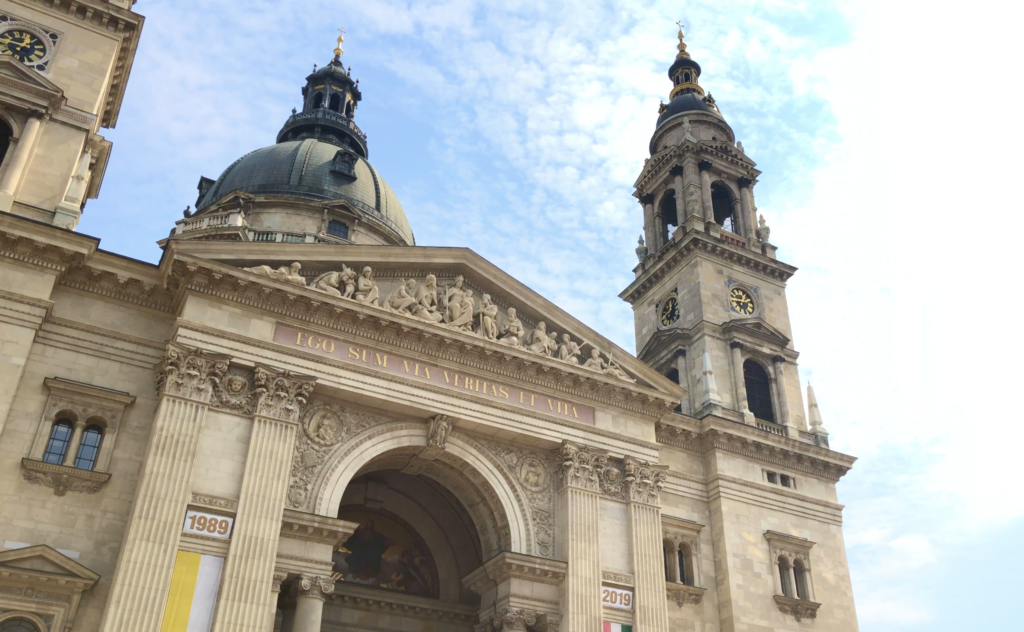
The amazing Roman Catholic St. Stephen’s Basilica also allows you to climb up one of it’s towers for a great view on the Pest side of the city. It’s centrally located surrounded by lots of great shops and restaurants. In the evening they’ll often hosts concerts here.
If you only have time to see 1 or 2 museums in Budapest, we’d recommend the:
7. Hospital in the Rock Museum
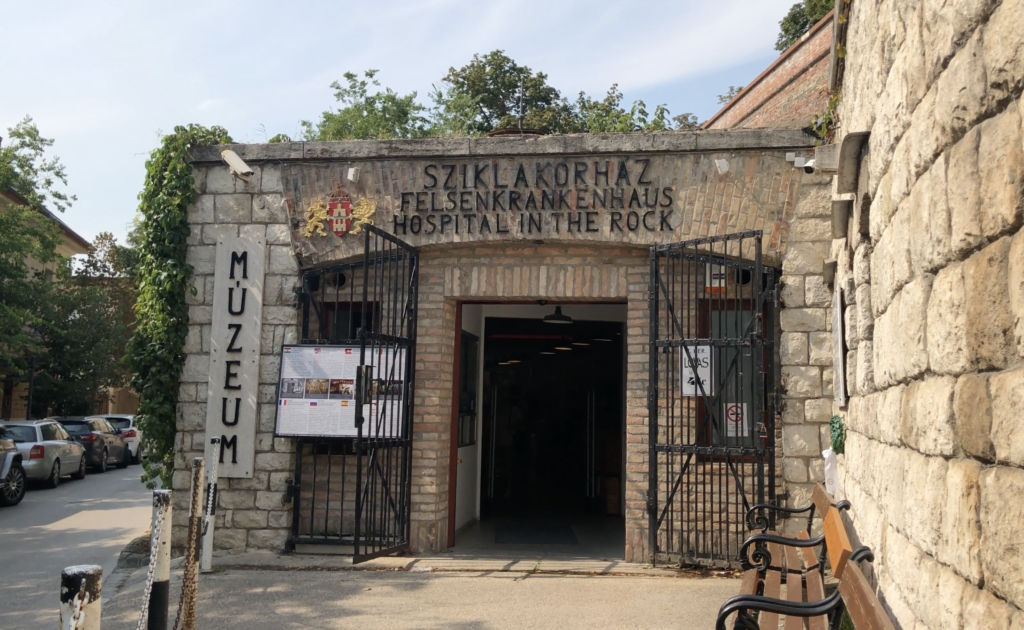
The Hospital in the Rock Nuclear Bunker Museum is the name given to a hospital created in the caverns under Buda Castle in the 1930s, in preparation for the Second World War. It later had many other uses and was not just used as a hospital.
8. House of Terror Museum

House of Terror was one of the most soul-stirring museums I’ve ever been to. Located on Andrassy Street, it contains highly disturbing exhibits related to the fascist and communist regimes in 20th-century Hungary and is also a memorial to the victims of these regimes – including those detained, interrogated, tortured or killed in the building itself.
It was actually the former headquarters of the Nazis and then later became headquarters for the communist secret police – a grim reminder of Hungary’s past. The first thing you see on the outside of the building and as soon as you walk in are the faces of the victims who were killed there. This building felt like so much more than just bricks and mortar and with such an eerie and ominous energy in there, I urge you to experience it for yourself as I consider this one of the most important things to do in Budapest.
9. Szechenyi Thermal Baths
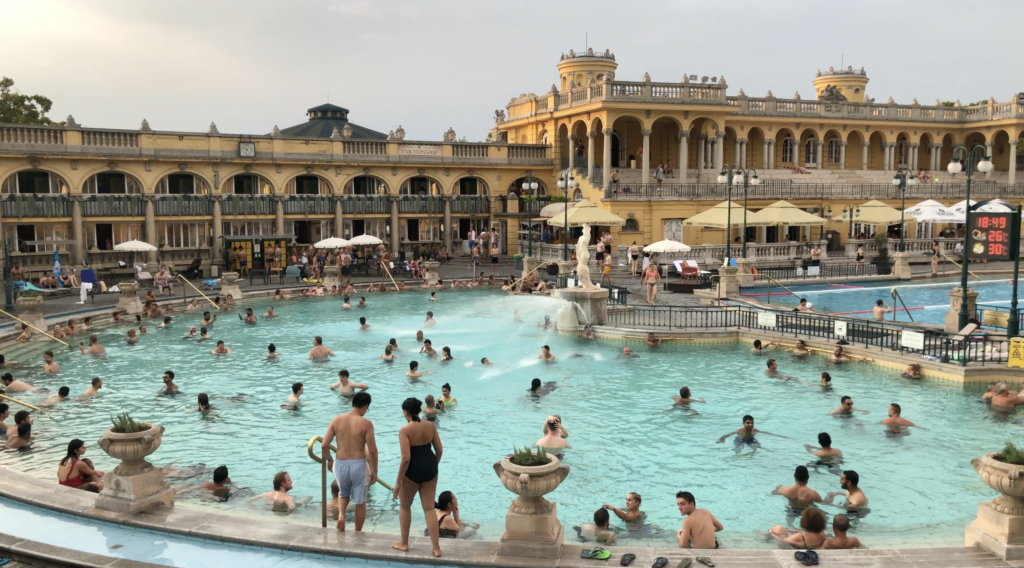
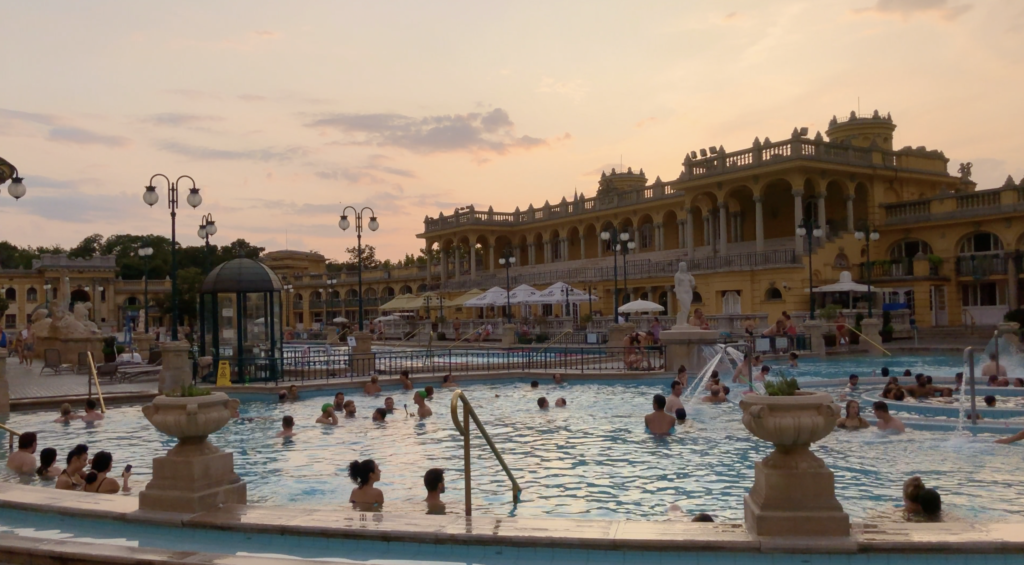
A must-do for all visitors in Budapest is to experience at least one Thermal Bath. The most famous of course being the Szechenyi Baths in the City Park and it also happens to be the largest medicinal bath in all of Europe. The baths have many indoor and outdoor pools of varying temperatures, saunas and steam rooms as well, and it stays open late until 10pm every single day of the week.
10. Heroes Square and Millennium Monument
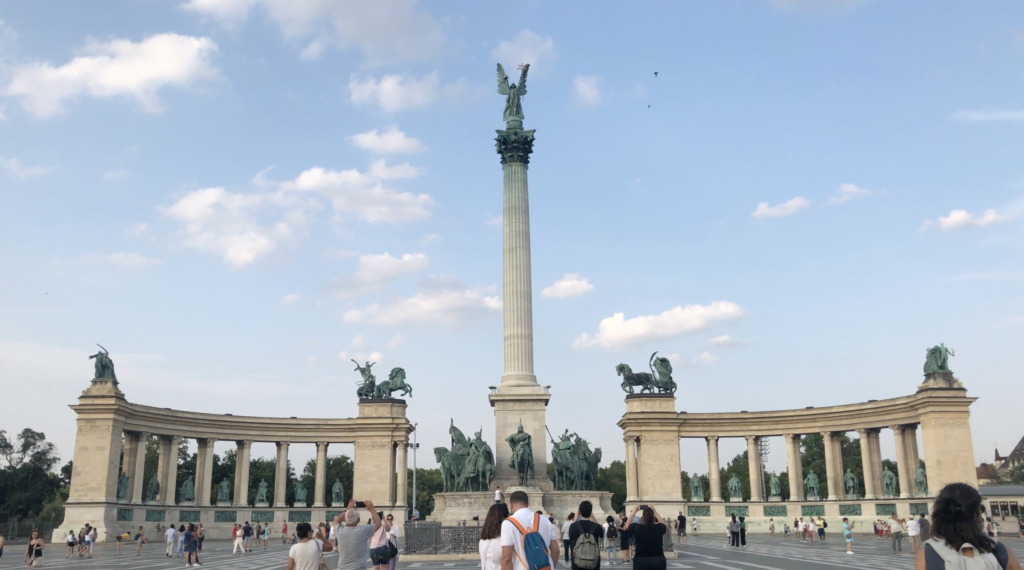
Right nearby is Heroes Square and the Millennium monument where you can see the seven leaders of the Hungarian tribe who founded Hungary and there are always a few street performers there.
11. Boat Tour and Margaret Island
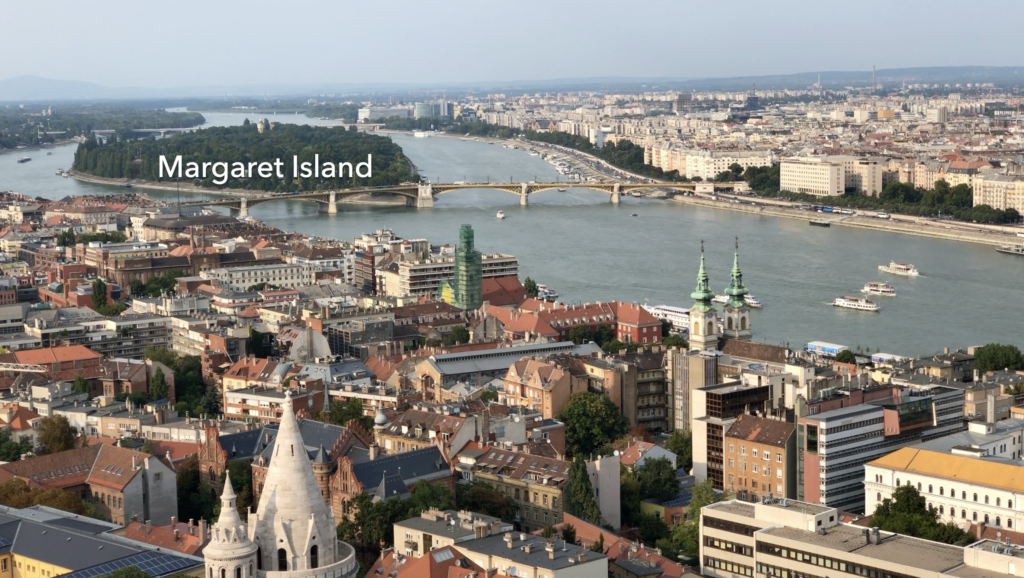
Another great way to see both sides of the Danube is to take a boat tour. We went with Legenda and had a great time. Choose one that offers a stop on Margaret Island for a few hours, which gives you enough time to walk around it. You’ll see a lot of active people getting their workout in. If you don’t want to take the ferry to Margaret Island, you can also get their by MARGARET Bridge by crossing the bridge.
12. Food Markets: Central Market Hall and Hold Street Market
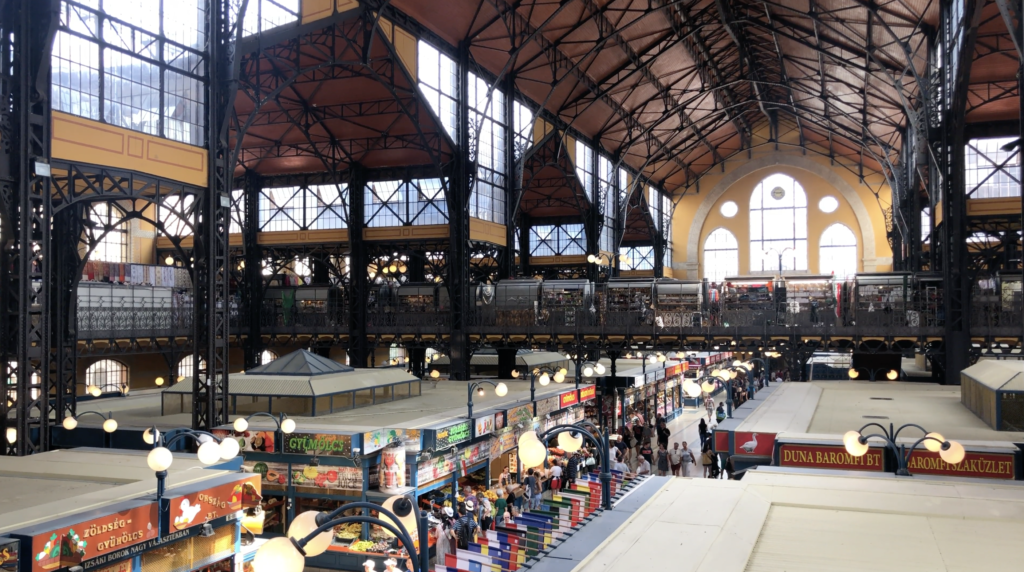

Now a short break from the cultural sites so I can share some of Budapest’s food scene:
Hearty Goulash. Chicken Paprikash. Fisherman’s soup. Super-size schnitzels. Sausage. Langos. Strudel…and so much more. We tried to eat it all, but felt like we only grazed the surface.
A great way to try a lot of things is to go to the markets. They’ve got two great markets in the city center: the smaller Hold Street Market is usually less crowded than the much bigger tourist-filled Central Market Hall.
For more adventurous eaters, you should also try their other popular food options like tripe soup, fried pig ear, giant pork knuckle and blood sausage. And not to mention, foie gras is everywhere in Hungary.
Fun Food Fact: Hungarians love their paprika, eating about a half a kilo of paprika per person per year.
13. Try Their Best Coffee Shops
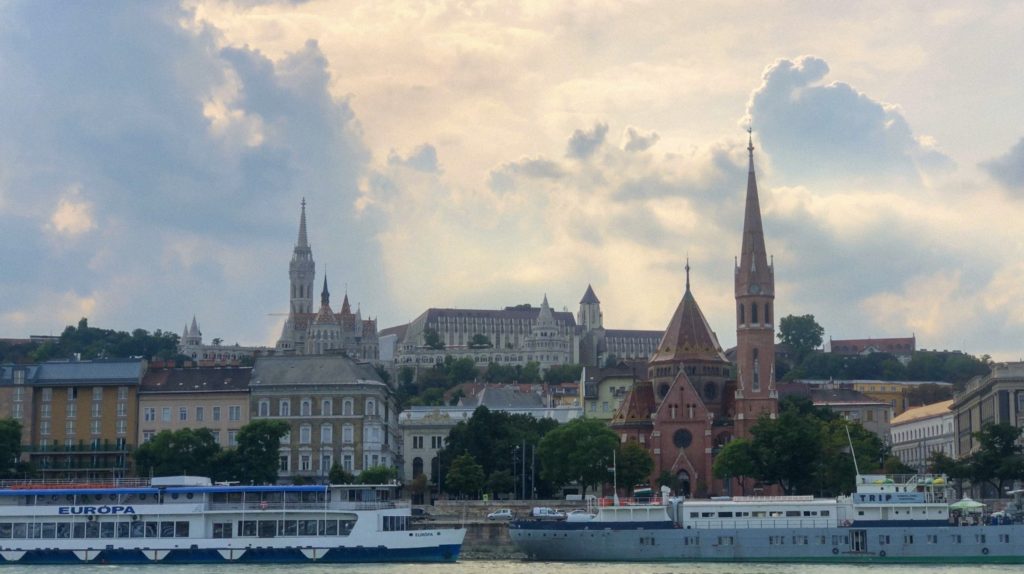
Another cool thing about Budapest is the amazing coffee culture here. We were able to find really good coffee wherever we went.
Our favorite spots were By Beans in Hold Street Market, Malal right behind the Parliament, and the newly opened The Hatchery which also has the best pastries.
14. Nightlife and Ruin Bar Scene

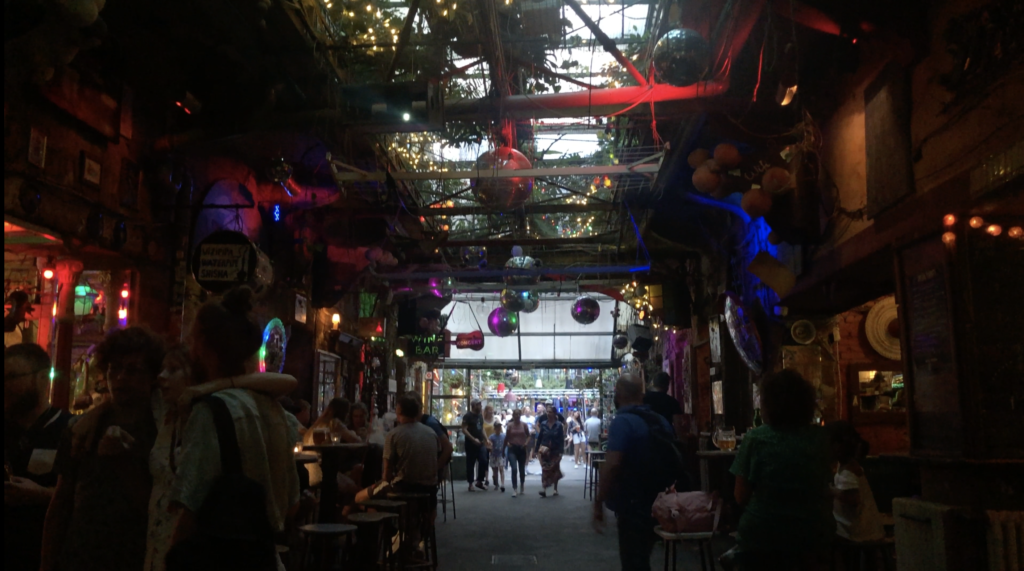
And what about Budapest’s bar scene. Budapest also has some really great edgy bohemian bars. And the Jewish Quarter is where you’ll find most of them, also called “ruin bars”. What are ruin bars?
Well, it all started as a small experiment to salvage these old broken-down condemned buildings by setting up the most bareboned bars that offered only the essentials, “cheap drinks for the young and creative crowds” but that soon grew and transformed itself into what is now considered a popular bohemian hub.
The most famous being, Szimpla Kert, which set a trend and launched a movement for these alternative spaces but our personal favorite was Kisuzem with a lot less tourists and a much more laid back vibe.
And while in Budapest, the signature drinks I’d recommend trying are the Hungarian Tokaji wine, Soproni Beer, Palinka (a hard fruit-flavored alcohol, my favorite was sour cherry), and Unicum (an herbal liqueur, sort of like Hungary’s version of Jagermeister, which is supposedly said to cure many things.)
15. Just Go With The Flow and Walk Everywhere
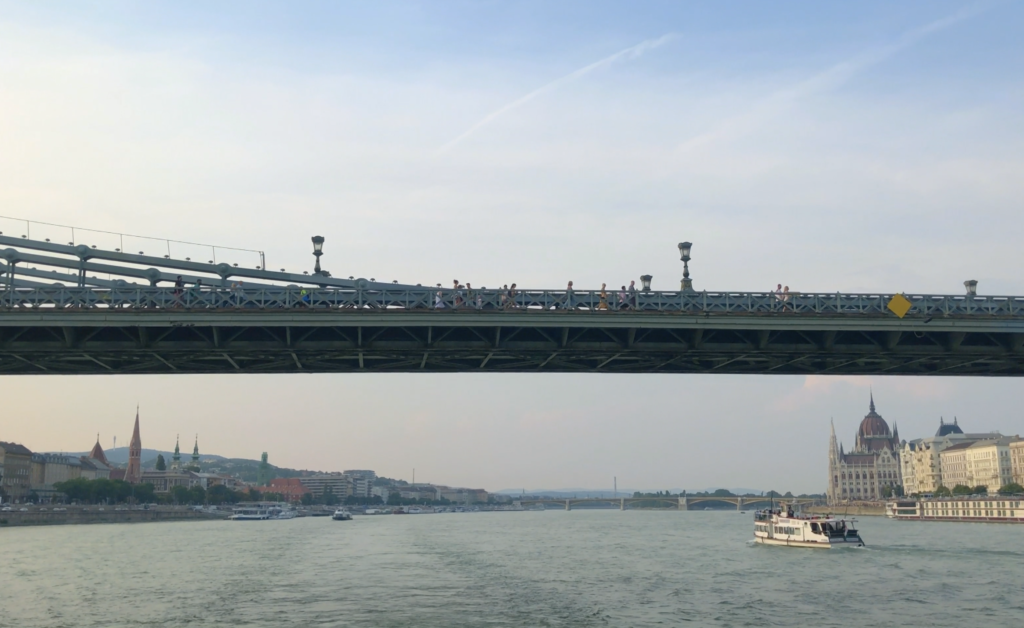
Walk everywhere and explore with no clear agenda. One of the things we loved about Budapest was how walkable it was – although we also used public transport a lot, it still seemed like we went everywhere on foot. I’d recommend starting by doing the loop along the Danube crossing both the Elizabeth Bridge around to the Chain Bridge.
I’d also recommend allotting at least a week in Budapest, it’s a truly magnificent city that’s best explored when not rushed.
The bottom line is, Budapest should be at the top of your travel list if it isn’t already. It’s a gorgeous city with so much history and charm, it’s safe, it’s clean…and people here seem to really be enjoying life. Not to mention, it’s much more affordable than other capital cities in Europe.
The feeling on the ground is that of hope, of creativity, of innovation…of leaving the dark aspects of their past behind and not just embracing but also highlighting all the good that Hungary’s history had left them. The city’s numerous cultural sites have been so well maintained and are merely physical examples of this, but their spirit tells a similar story of resilience, maturity, and renewed optimism.
Hope this helps, safe travels.
Olivia and Nathan
ON World Travel